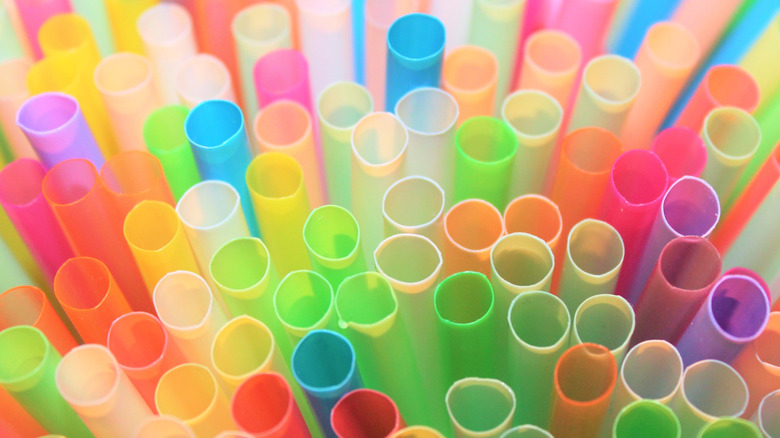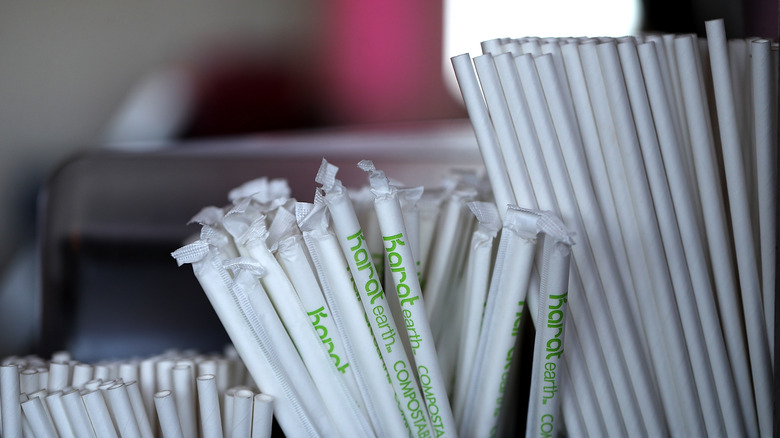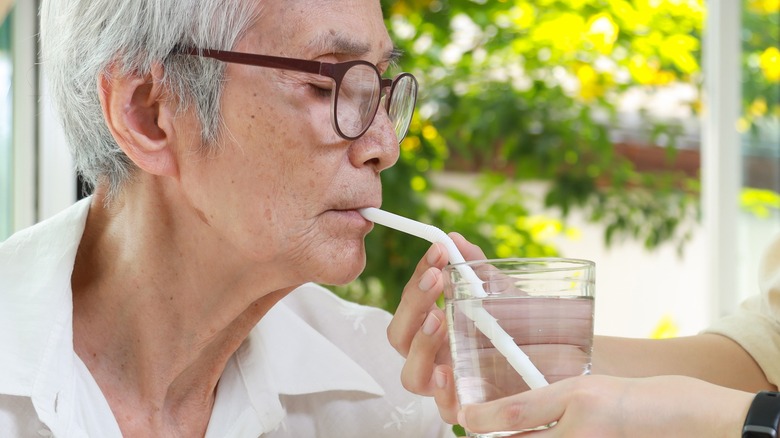Are Paper Straws Really Better For The Environment?
The story of how paper straws came to be so ubiquitous is an interesting one. The New York Times says a 9-year-old boy's statistics on American plastic straw usage accidentally launched a national movement against single use plastic straws. According to the child, Americans use about 500 million straws every day. "That figure has been cited widely," the Times reports, adding that almost a dozen national news outlets — including the Times — have cited the figure in their reporting.
While industry estimates are slightly lower, (the Times reports that some manufacturers have said it's actually 170 million or 390 million) it started a movement. The child, Milo Cress, is now all grown up and went on to found the Be Straw Free campaign, which was supported by the National Park Service.
Eco-conscious consumers pay close attention to how their choice of everything from plant-based milk to glitter lip gloss impacts the environment and straws are no different. As a result, many of us became super aware of our plastic straw usage and the paper straw emerged as a popular alternative.
Pros and cons of paper straws
According to a study conducted at North Carolina State University, paper straws are the best disposable alternative to plastic straws mainly because paper doesn't produce the kind of plastic waste that can take over 500 years to decompose. But the study also found that just because they're the best disposable alternative, doesn't mean they're a good one.
If you've ever encountered a paper straw before, you'll know they struggle with most beverages. If you take your time with your drink, you might notice how paper straws tend to soak up the liquid, becoming limp and disintegrating before you finish your drink.
Paper straws might be better for the environment, but the study notes that they are proven to leech chemicals that can change the taste of your drink. Other critics maintain that paper straws are still single-use disposable items, and The Atlantic goes as far as to claim that paper straws, while the lesser of two evils, aren't green at all as they only partially solve the waste problem of disposable straw usage.
Disabled people use plastic straws
Starbucks pledged to eliminate the use of straws by 2020. So did companies like Marriott and Ikea. Some states began to ban plastic straws as well; California became the first state to ban plastic straws in restaurants in 2018. In their place, plastic sip lids and paper straws became the new normal and people were encouraged to carry reusable straws.
While nonprofits, local governments, and big companies argue over the marginal differences between paper and plastic straws, the disability community has to work through being suddenly deprived of a crucial accessibility tool: bendy plastic straws.
Amy Scherer, a staff attorney for the National Disability Rights Network, spoke to Refinery29 about how bendy plastic straws help people with certain disabilities, as the rigidity of alternatives to plastic straws makes them harder for some people to use. "Some concerns may include: limited upper body strength (making it hard to lift a cup), limited range of motion in the arms (making it hard to tilt the cup toward one's mouth), limited dexterity (making it hard to grasp a cup) or limited motor coordination (making it hard to hold a cup without spilling it)," Scherer told the outlet.


